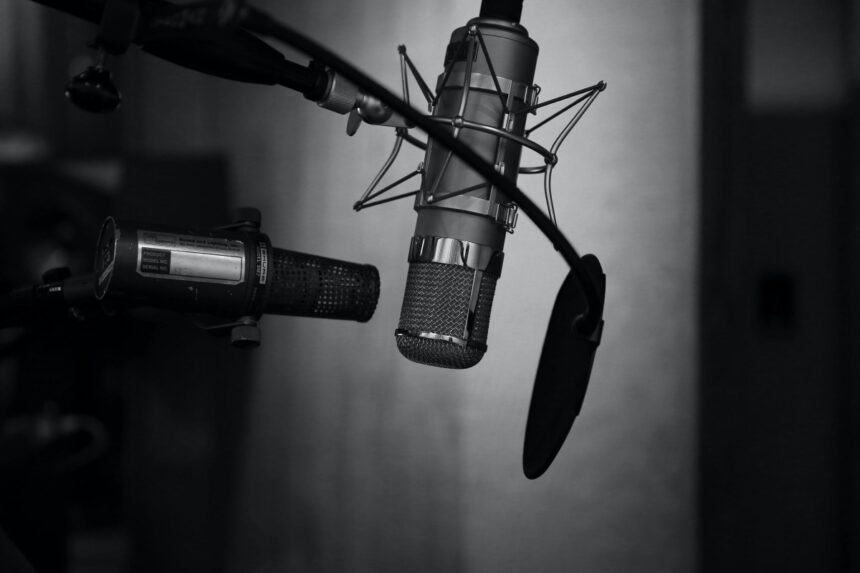Starting a podcast is exciting, but choosing the best podcast microphone is key to your success. Audio quality can make or break your show, so investing in the right microphone is essential. With so many options available, it’s important to know which microphone suits your needs. In this guide, we’ll explore key factors and cover the best microphones for 2024 to help you make an informed choice.
What to Consider When Choosing a Podcast Microphone
Before jumping into the top microphones, it’s important to understand what to look for in the best podcast microphones. Here are a few key considerations:
- Budget: Choose a microphone that fits your budget. Options range from affordable USB mics to high-end professional XLR mics. Finding the best cheap microphone doesn’t mean compromising on quality.
- Microphone Type: Whether you prefer a dynamic microphone or a condenser mic depends on your recording environment. USB microphones are perfect for simplicity, while XLR microphones are better for professional setups.
- Connectivity: Do you need a USB mic for easy plug-and-play functionality, or an XLR microphone for better sound quality in professional recordings?
- Sound Quality: Look for microphones with superior audio clarity and noise reduction. Options with pop filters and shock mounts can minimize unwanted sounds.
- Polar Patterns: Microphones come with different polar patterns, such as cardioid or omnidirectional, to control how they pick up sound. A cardioid microphone is best for single-voice recordings, while an omnidirectional microphone captures sound from all directions.
- Portability: If you need to record on the go or travel, a lightweight and portable microphone is ideal.
- Accessories: Consider getting mic stands, windshields, and mic arms to optimize your recording setup.
Dynamic Microphones for Podcasting
Dynamic microphones are popular for their durability and versatility, making them ideal for podcasters who record in less controlled environments. These microphones are perfect for podcasting, broadcasting, and live recording.
- Durability: Dynamic mics, like the Shure SM7B, are known for their rugged build. They can handle rough environments and are great for recording outdoor audio or in noisy surroundings.
- Versatility: These mics work well for recording everything from vocals to instruments. They are also commonly used for broadcast microphones in radio shows and public speaking.
Top Dynamic Microphones for 2024:
Condenser Microphones for Studio Quality
Condenser microphones are highly sensitive, capturing a lot of detail, which is ideal for studio environments where sound control is easier.
- High Sensitivity: Condenser mics pick up the smallest sound details, making them perfect for vocals and instruments. They often require phantom power and use XLR cables for a clean signal.
- Frequency Response: These mics offer a wider frequency range, making them a go-to for studio microphones and music recording.
Top Condenser Microphones for 2024:
USB Microphones for Simplicity
If you’re looking for a simple setup, USB microphones are the best choice. USB mics plug directly into your computer and are easy to use, making them ideal for beginner podcasters or streamers.
- Easy Setup: USB microphones are plug-and-play, so you don’t need additional equipment like an audio interface. They’re great for home studios or for recording while traveling.
- Affordability: USB podcast microphones like the Blue Yeti are budget-friendly while still delivering high sound quality.
Top USB Microphones for 2024:
XLR Microphones for Professional Recording
For high-end sound, XLR microphones are the gold standard in professional podcasting and broadcasting. Although they require additional equipment like an audio interface or mixer, the audio quality you get is top-notch.
- Balanced Audio: XLR mics provide balanced signals, reducing interference and noise. They are best for studio recording, podcasting, and professional voiceovers.
Top XLR Microphones for 2024:
Accessories to Enhance Your Audio Setup
To make your recordings sound even more professional, you may want to invest in additional microphone accessories:
- Pop Filters: Helps reduce plosive sounds like “p” and “b.”
- Shock Mounts: Minimizes vibrations and noise from movements.
- Boom Arms: Allows you to position your microphone for maximum comfort.
Final Thoughts
Finding the best podcast microphone for your needs can be tricky, but understanding the different types and what features to prioritize will make the process easier. Whether you’re opting for a dynamic mic, condenser mic, or USB mic, focus on your recording environment and specific requirements.
Investing in the right microphone, along with helpful accessories like pop filters, shock mounts, and mic stands, will elevate your podcast’s sound quality. The options listed above offer great choices for any budget or experience level, ensuring you get the best results from your recordings. Happy podcasting!
